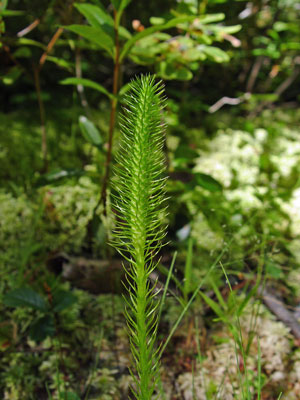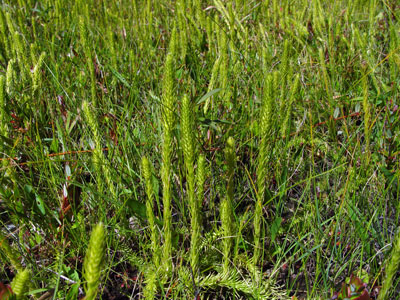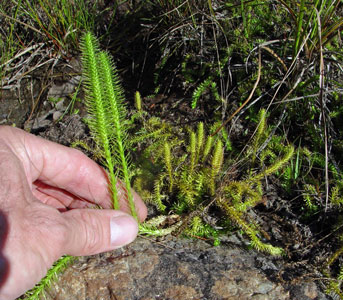DACF Home → Bureaus & Programs → Maine Natural Areas Program → Communities, Plants, and Animals → Rare Plants → Lycopodiella alopecuroides

Lycopodiella alopecuroides (L.) Cranfill
Foxtail Bog-clubmoss
- State Rank: S1
- Global Rank: G5
- State Status: Endangered
Habitat: Sandy and peaty shores, wet barrens, savannas.
Range: Along coastal plain from Maine south to Florida and Louisiana.
Aids to Identification: The genus Lycopodiella is a group of deciduous clubmosses (all others in Maine are evergreen). They are recognized by their simple terminal stobili on upright shoots borne from creeping stems. The sporophylls of Lycopodiella are leaf-like. Foxtail bog-clubmoss differs from other Maine Lycopodiella spp. in having stems that arch above the substrate and then root once contact is re-established with the substrate. Foxtail bog-clubmoss also has much wider strobili (10-20mm wide) than other Lycopodiella spp.

Ecological characteristics: Often found growing in disturbed habitats along the coastal plain including pondshores, and powerlines. Hybrids with other Lycopodiella spp., which complicates identification.
Phenology: Sporates in summer.
Family: Lycopodiaceae
Synonyms: Lepitdotis alopecuroides (L.) Rothm.; Lycopodium alopecuroides L.
Known Distribution in Maine:This rare plant has been documented from a total of 2 towns in the following county: Cumberland, Sagadahoc.

Reason(s) for rarity: At northern limit of range
Conservation considerations: Population is located in a powerline right-of-way. Maintenance, ATV use, and herbicide applications could threaten population.
For more information, see the Native Plant Trust's Conservation Plan for Lycopodiella alopecuroides.